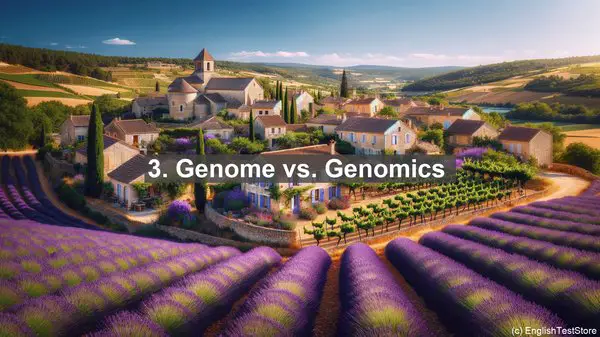Introduction
Welcome to today’s lesson on comparative genomics. In this lesson, we’ll be discussing the top 10 commonly confused words in this field. Understanding these words is crucial for accurate communication and analysis in genomics research. So, let’s dive in!
1. Homologous vs. Analogous
The terms ‘homologous’ and ‘analogous’ are often used interchangeably, but they have distinct meanings. Homologous refers to features shared due to a common ancestor, while analogous refers to features with similar functions but different evolutionary origins. It’s important to differentiate between these terms when comparing genetic traits.
2. Orthologs vs. Paralogs
Orthologs and paralogs are two types of homologous genes. Orthologs are genes in different species that evolved from a common ancestral gene, while paralogs are genes that arose through gene duplication within a species. Understanding their differences is crucial for studying gene evolution and function.
3. Genome vs. Genomics
While ‘genome’ refers to the complete set of genetic material in an organism, ‘genomics’ is the study of the structure, function, and evolution of genomes. Genome is a noun, whereas genomics is a field of study. So, we talk about sequencing a genome, but studying genomics.
4. Alignment vs. Assembly
Alignment and assembly are two essential steps in genome analysis. Alignment involves comparing and arranging genetic sequences to identify similarities and differences, while assembly is the process of piecing together short DNA fragments to reconstruct a complete genome. Both are crucial for accurate genomic analysis.
5. Annotation vs. Prediction
Annotation and prediction are common tasks in genomics. Annotation involves identifying and labeling specific features in a genome, such as genes and regulatory elements. Prediction, on the other hand, involves using computational models to estimate gene function or protein structure. Both play vital roles in genome analysis.
6. Synteny vs. Collinearity
Synteny and collinearity are terms used to describe the conservation of gene order across different species. Synteny refers to the conservation of gene order in a chromosomal region, while collinearity is the conservation of gene order along an entire chromosome. Both concepts are important for understanding genome evolution.

7. Phylogeny vs. Phylogenomics
Phylogeny is the study of evolutionary relationships between organisms, often represented as a tree-like diagram. Phylogenomics, on the other hand, combines genomic data with phylogenetic analysis to infer evolutionary relationships. It’s a more comprehensive approach that leverages genomic information for phylogenetic studies.

8. SNP vs. Indel
SNP and indel are two types of genetic variations. SNP, or single nucleotide polymorphism, refers to a single base change in the DNA sequence. Indel, short for insertion-deletion, involves the insertion or deletion of a small DNA segment. Both types of variations are important for understanding genetic diversity and disease susceptibility.
9. Eukaryotes vs. Prokaryotes
Eukaryotes and prokaryotes are two major categories of organisms. Eukaryotes, including plants and animals, have complex cells with a nucleus, while prokaryotes, such as bacteria, have simpler cells without a nucleus. Understanding these distinctions is fundamental when comparing genomic features between different organisms.
10. BLAST vs. FASTA
BLAST and FASTA are popular bioinformatics tools for sequence comparison. BLAST, or Basic Local Alignment Search Tool, is a versatile program that can search for similarities in large databases. FASTA, on the other hand, is a format for representing sequence data. Both tools have their specific applications in genomics research.
